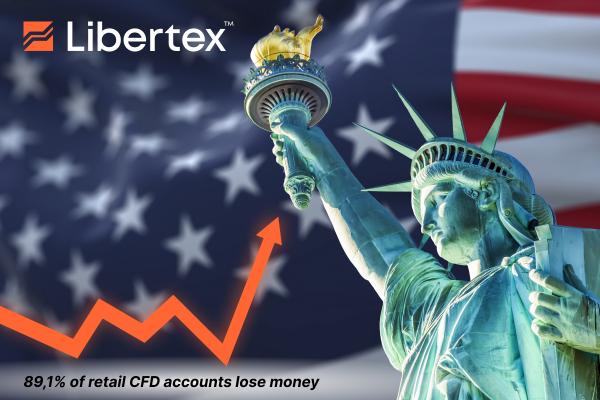From having to survive off of government handouts in 2020 to holding all the bargaining power today, unskilled workers have been on a rollercoaster ride of ups and downs over the past couple of years. But it isn't just restaurant workers and retail employees who have gained the upper hand in labour negotiations. The latest topline economic indicators reveal a remarkably strong US labour market across all sectors. That's right, over the last 3 months, the US economy added an average of 356,000 jobs, while national unemployment stands at a 50-year low of 3.4%. Almost all major industries have now exceeded their pre-pandemic engagement levels. Meanwhile, the "quit rate" remains at near record highs, which is a clear sign of American workers' confidence in the labour market and an abundance of better employment opportunities.
Following this week's (08/03/23) release of the US Labor Department's Job Openings and Labor Turnover Survey, the numbers remain very positive, albeit slightly less impressive than the last report. New job openings were down slightly to 10.8 million, layoffs were marginally higher, and the quit rate dipped mildly. However, this is perfectly normal in January as the seasonal employment effect disappears and businesses look to trim costs for the next financial cycle. And while this is all very well and good for employees, traders and investors would understandably like to know what the implications of such a strong labour market are for their investments in the financial markets. Therefore, this article will look at the effect of the strong labour market on three of the most-traded asset classes around: stocks, forex and commodities.
Equities in the frame
A strong labour market is generally good for the stock market as it means more people are secure and confident about the medium- to long-term future and, thus, more likely to have surplus income they wish to invest. Combine this fact with the pandemic-era influx of retail investors into the equities markets and the relatively low prices of US stocks right now, and you would think it's a recipe for stock market gains to come. However, the reality is that many of these same new retail investors bought at the top and are nursing heavy losses. And despite logic dictating that buying more now is the wisest way to try and recoup what they've lost, statistics demonstrate that most do the exact opposite: sell at a loss and swear off stocks for good.
Another compounding factor here is the US Federal Reserve. The US regulator is likely to view these steadfastly positive labour numbers as a green light to press on with their rate hike cycle. As anyone with even a passing interest in trading knows, higher interest rates are typically bad news for stock prices. We would also be wise to consider the effect of strong labour bargaining power on company profits. Employees with plenty of options tend to be able to negotiate higher wages, which is bound to impact corporate bottom lines in 2023. At its current level of 3,946, the S&P 500 has been flat since May 2022, and it's hard to see cause for a major swing to the upside anytime soon.
Dollar bills
One asset class that undoubtedly benefits from a buoyant labour market is the country's national currency. In this case, it's the US dollar. As Americans' earnings go up relative to their counterparts' in other countries, the greenback's foreign exchange value increases. But in the current climate, this effect has been doubled, and, once again, the Fed is at the centre of it all. As we touched upon earlier, Powell is watching the labour market like a hawk and using it as a gauge for how fast and hard the regulator can continue to tighten. While the data remain largely positive, the central bank will carry on pressing towards its projected terminal rate of 5.3%. And we all know that higher interest rates always translate to a stronger USD.
Add to this the ongoing economic uncertainty globally and the dollar's safe harbour status, and there's reason to believe that green truly will be the colour of money in 2023. Apart from the US national currency, we can also expect positive returns for other haven currencies such as the Swiss franc and Japanese yen. The US Dollar Index has already risen 5% to 105 this month and could well continue to push on towards its September 2022 high of 114.10.
Don't forget commodities…
With more fashionable assets like crypto and stocks, we can often overlook simple commodities like gold, silver, and even energy resources. However, these are powerful vehicles for profit in bull cycles, especially for day traders. Interestingly enough, there is a direct link between higher commodity prices and labour market strength, as was noted as early as 2017 by Martin Bodenstein of the Washington DC Federal Reserve. In his report Commodity Prices and Labour Market Dynamics in Small Open Economies, he notes that "for every one per cent increase in commodity prices, our estimates suggest a one basis point decline in the unemployment rate and at its peak a 0.3% increase in unfilled vacancies". Well, we all know all too acutely how much energy commodities have risen over the past year, and this could indeed have played a role in strengthening the labour market.
However, in stark contrast to other commodities, precious metals have been fairly flat. In fact, at its current price of 1,834 per Troy ounce, gold is actually down almost a full 10% from this time last year. Meanwhile, silver has fared even worse. It's currently sitting 20% below its March 2022 level at 20.11 an ounce. One has to feel that if the rest of our predictions play out in terms of a stronger dollar and further Fed tightening, these core commodities will have to make good at least some of this lost ground before year's end.
Trade with Libertex
As a veteran CFD broker providing access to multiple different markets, one of Libertex's main advantages is its versatility. Our traders and investors can gain exposure to a wide range of instruments, from stocks, bonds and forex all the way through to energy, precious metals and more. Libertex's extensive CFD offering includes major indices like the S&P 500 and Nasdaq, forex options like the US Dollar Index — as well as major pairs such as the EURUSD and GBPUSD — and even gold and silver. And because Libertex offers long and short positions, not only can our clients diversify across asset classes, they can trade on any market outcome. For more information or to create an account of your own, visit https://libertex.org/signup






